5 Best Post Workout Stretches To Help Loosen Tight Muscles After You Exercise

If you just bench-pressed a new personal record, that’s cause for a celebratory protein shake. But before you get too excited, there are a few things you need to do before you hit the locker rooms to freshen up.
First, wipe down your equipment. But after that, you better start stretching. Stretching your bulging muscles isn’t just for pre-workout warm-ups. It’s also an essential part of your post-workout cool-down.
We know you’re anxious to finish your workout as fast as you can, but it only takes a few minutes to loosen stiff muscles, prevent injury in the future, and decrease soreness the following day. Here are five essential post-workout stretches to help your hard work pay off even more.
Stretching Basics
We don’t doubt that you incorporate stretching into your exercise routine. The thing is, there are tons of different kinds of stretches, and not all of them are built equally.
Static stretches, for example, involve flexing a muscle to its furthest point and maintaining the position for a period of time. A hamstring stretch while seated on the floor is the epitome of a static stretch. These are commonly practiced, but they actually don’t have as many benefits as people believe.
Instead, experts recommend dynamic stretches, which involve gentle, constant movement of joints and muscles. Arm circles are great dynamic stretches that help improve your flexibility and raise your heart rate during a warm-up.
But for post-workout cool-downs, active stretches are the way to go. These are a type of static stretch in which one muscle is contracted (the agonist) in order to force another muscle to stretch (the agonist) with nothing more than bodyweight.
For example, if you do a tricep stretch by bending your arm behind your neck, your bicep (agonist) contracts in order to let the tricep (antagonist) stretch out. One way to remember the difference between the agonist and antagonist muscle is that the agonist is in “agony” when you are doing the movement because it’s doing all of the work.
These are great because they work multiple muscles at one time. Plus, they can help break up lactic acid build-up in your muscles, which is the reason they become sore in the first place. And having loose, fluid muscles can decrease the risk of strains and improve your performance the next time you hit the weight floor.
Our five favorite post-workout stretches are mainly active stretches because of their many benefits. But we threw in a few curveballs to keep things feeling fresh.
1. Active Hamstring Stretch
Your hamstrings are the muscles on the underside of your thighs. Stretching these muscles is especially important if you’re a runner or a biker, but it’s also super important that you’re loosening them after some intense deadlifts.
In this stretch, your quadriceps on the front of your thigh act as the agonist so that your hamstrings can fully flex.
Here’s how to do an active hamstring stretch:
- Lay down on your back.
- Slowly lift your right leg towards the sky, keeping your legs straight without bending your knee. Stop when you feel tension in your hamstrings.
- Hold for about ten to 15 seconds. Slowly lower back to the ground and repeat with your left leg.
This stretch also activates your hip adductors and gives your calf muscles some good flexion as well.
2. Overhead Triceps Stretch
After your round of 100 push-ups or chest presses, your triceps probably need a little break. The overhead tricep stretch is another active stretch that forces the biceps to contract so that your triceps can fully flex.
Here’s how to do it:
- Stand with your feet shoulder-width apart. Raise your right arm straight above your head.
- Bend your elbow and slowly reach behind your head towards the bottom of your neck.
- Hold your arm in place for ten to 15 seconds. Repeat with your left arm.
As it stands, this is another active stretch. But you can turn it into a passive stretch by using your free arm to gently push your arm down past its normal point of flexion. These types of stretches can be really useful for trying to improve mobility and increase your range of motion.
3. Quadruped Thoracic Rotation
Your spine is broken up into two main sections: the lumbar and the thoracic spine. These refer to your lower and upper back, respectively.
Stretching your thoracic spine is important for not only enhancing your flexibility but it also can help make your shoulders and arms more limber as a result. This stretch is great to do if you’ve been doing a lot of upper body exercises, like rowing or reverse flys.
To do a quadruped thoracic rotation:
- Assume a quadruped position, meaning your palms are on the floor and your knees are stacked under your hips. Engage your core and keep your back flat.
- Place your right hand on the back of your head so that your elbow points to the right. Slowly rotate your head and shoulders towards your left hand on the floor, keeping your lumbar (lower) spine as stable as possible.
- Reverse the motion to return to the starting position. Repeat this for about 30 seconds and then switch arms.
This is an example of a dynamic stretch where your body engages in a gentle movement to work a ton of muscles at once. This focuses on your oblique muscles on the sides of your abdomen as well as your latissimus dorsi.
4. Bent Arm Chest Press
Going back to an active stretch, the bent arm chest press will help to loosen your pectoral muscles after a heavy chest-focused session. This one will also help to engage your back muscles (the agonist) as well as your shoulders.
To do a bent arm chest press:
- Stand with your feet shoulder-width apart.
- Lift your arms at your sides until your elbows are bent 90 degrees. Gently push them back behind your body, squeezing your shoulder blades and allowing your chest to stretch.
- Hold this position for ten to 15 seconds and release.
You can do this stretch up against a wall as well to make it an active stretch. Place your bent arm against a wall and gently push your body forward so that the resistance from the wall forces your arm behind your body.
5. Core Bridge Stretch
The calming powers of yoga are unmatched, and a lot of yoga moves double as great post-workout stretches. The bridge stretch engages your hips, lower back, as well as your rectus abdominis to improve stability and mobility in your core.
To do a bridge stretch:
- Lie on your back. Bring your feet towards your glutes with a bend in your knees.
- Engage your hips and lift your core off the ground towards the sky. Keep your spine straight, essentially making a triangle with the floor beneath. Use your hands for stability.
- Hold for ten to 15 seconds. Slowly release and return to the starting position.
You can also do some exercises from this position to mimic a decline bench. If you have some dumbbells or your Gorilla Bow handy, you can perform a chest press from a bridge pose in order to target your lower pectoral muscles.
Importance of Post Workout Stretching
After your workout, your muscles might feel sore, tired, and tense. Not only is this uncomfortable overall, but it impairs your ability to hit peak performance day after day.
Stretching after (and before) your workout keeps your muscles loose so that they don’t impact your joint function. Not to mention, it can help your heart rate return to its normal level as part of a proper cool down.
In short, there’s really no reason not to stretch when you’re all done pumping iron. It only takes five to ten minutes, and then you’ll feel even better for the rest of the day.
Let Loose
Stretching keeps your muscles flexible and prevents soreness the next day. Some of the best types of stretches to do after an intense workout are active stretches, but incorporating some passive and dynamic moves into your cooldown makes for the most effective regimen possible.
While all five of these stretches are great places to start, they are by no means the only ones you can do. Need some more ideas to take your workouts to the next level?
Pair your Gorilla Bow with the All-Access Membership to gain access to live and on-demand fitness classes that help you get the most out of your resistance training gains. From full-fledged Tabatas to strength-focused lessons, it’s like having a full gym right from home,
Sources:
Agonist and antagonist muscle pairs - Muscular system | BBC Bitesize
Why Does Lactic Acid Build Up in Muscles? And Why Does It Cause Soreness? | Scientific American
3 Reasons To Stretch After Exercising | Rebound Physical Therapy


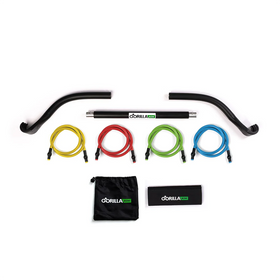
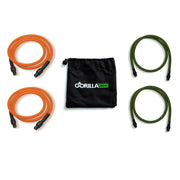
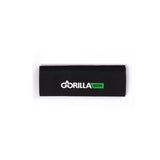
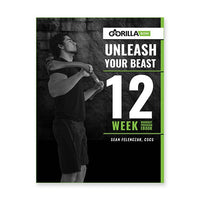
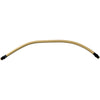


Leave a comment